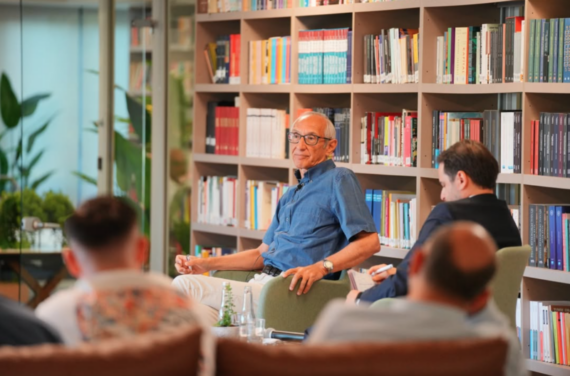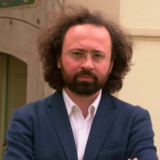On July 15, 2016, Turkey experienced an attempted military coup that seemed, by all conventional measures, destined for success. Backed by significant segments of the armed forces, including elements of the air force and navy, the coup appeared technically unassailable. And yet, within a matter of hours, it collapsed. Understanding how this happened requires us to look well beyond the military dimension and into the political, sociological, and organizational fabric of contemporary Turkey.
One of the most compelling analyses of this failure comes from Prof. Dr. Cemil Koçak, a leading historian of 20th-century Turkish history. Drawing on decades of research on the early republican period, authoritarianism, and Turkish civil-military relations, Koçak, in his recent talk at the Institute Social, a newly founded think-tank in Istanbul, frames the July 15 coup as a singular event, one that both fits within and dramatically departs from Turkey’s long history of military interventions.
Prof. Koçak lays out a multilayered analysis that reveals the sociopolitical complexity behind the failure. He places the July 15 coup attempt outside of conventional categories. His analysis is crucial to understanding how the FETÖ (Fethullah Gülen Terrorist Organization) emerged as an “exceptional” example of clandestine state infiltration – and how, despite its reach, the coup unraveled.
In Koçak’s view, FETÖ’s organizational structure occupies a highly unusual place in Turkey’s history of covert movements. On one hand, it found support, at times tacit, at times explicit, from different layers of the state and successive political governments. On the other hand, it built a vast educational and financial network within a legal framework, while simultaneously developing international alliances. Through institutions like schools and media outlets, the group maintained a public-facing, legitimate image while quietly capturing key positions within the state and pursuing covert infiltration of the judiciary, bureaucracy, and the armed forces. This dual structure, namely legal visibility and covert penetration, gave the organization a kind of institutional flexibility and strength unseen in prior examples.
Koçak draws a stark comparison between the 1960 military coup and that of 2016. The former was executed with just 12 tanks; a 13th couldn’t be found. In contrast, the July 15 plotters commanded enormous force, especially from the air forces, substantial portions of which were under FETÖ’s influence. The fact that dismissals are still ongoing years later illustrates the scale of infiltration. For Koçak, this means the July 15 coup was, technically, an operation with a high likelihood of success. So why did it fail?
Read: Who are the Gülenists?
The Night the Military Lost Control–and the People Took Over
Koçak points first to weaknesses internal to the organization. One key issue was the degradation of merit within military recruitment and promotion. Military entrance exams became formalities; loyalty to the movement, not professional competence, became the primary criterion. This created a cadre of officers who, during moments of crisis, lacked the initiative and flexibility required to act decisively. The leadership deficit was further compounded by mistrust within the organization itself. Officers were often subordinated not to military superiors, but to “imams” appointed by the organization’s internal, non-military hierarchy. In one telling example, Koçak notes that coup plans sent to the U.S. were reviewed not by strategic experts but by a theology-trained imam, a sign of the movement’s internal insecurity and preference for tighter control over “professional” insight.
These structural flaws played out in operational decisions. The most obvious was the last-minute decision to launch the coup earlier than planned. Originally set for 3:00 a.m., the operation was abruptly moved to 8:00 p.m. due to fear of exposure. This shift disrupted the previously coordinated plans, triggered panic, and paralyzed the command structure. Orders did not flow properly, and the chain of command disintegrated. According to Koçak, this failure of coordination, rooted in organizational dysfunction, was a decisive factor in the coup’s collapse.
Recommended
Yet, Koçak argues that the most critical failure was not organizational, but societal. Unlike in previous military coups, there was no meaningful support from political parties, the media, or large segments of society. The opposition’s support and approval of the coup attempt were tacit and silent. In 1960 and 1971, however, larger parts of the public and political class supported the military, either actively or passively. This time, both the press and the public at large resisted. People took to the streets in unprecedented numbers. Koçak suggests the coup plotters failed to account for this possibility. Without historical precedent, they assumed no such resistance would occur. “They could not imagine that something which had never happened before might actually happen,” he notes.
This shift in civic behavior, Koçak emphasizes, is deeply tied to changing political reflexes. Since the 2000s, and especially following the 2007 e-memorandum, the AK Party government and Recep Tayyip Erdoğan in particular began to push back against military tutelage. The firm stance taken during that period, Koçak argues, instilled new confidence in society. A collective awareness emerged: that military interventions were neither inevitable nor unstoppable.
In this regard, Koçak underlines Erdoğan’s leadership on July 15 as a decisive factor. The refusal to flee, the direct appeal to the public, and the call for resistance all contributed to a new political dynamic. “Give Caesar what belongs to Caesar,” Koçak says. In all previous coups, civilian leaders had capitulated. This time, they did not. Nor did the public. Nor the media. July 15, then, marks not only the failure of a coup but the collapse of long-standing expectations about how such events unfold and how institutions respond.
Koçak’s thesis also delivers a decisive rebuttal to a claim voiced by some of Turkey’s opposition figures that July 15 was a “controlled coup” orchestrated or deliberately allowed by the government. Far from suggesting manipulation from above, Prof. Koçak’s analysis underscores how deeply FETÖ had penetrated state structures and how real the threat to civilian rule actually was. The scale of the military mobilization, the chain-of-command disruptions, and the internal dysfunctions within the putschist ranks all point to a genuine and autonomous coup attempt, one that ultimately collapsed not because it was staged, but because it was systemically unsustainable and unable to overcome the joint political and public will. In my opinion, framing such an event as a government conspiracy is not only analytically weak but also historically irresponsible.
To understand July 15, we must examine it not just as a failed military operation, but as a moment of historical transition. As Prof. Dr. Cemil Koçak’s analysis makes clear, it was a test of institutional culture, political will, and collective memory. And in each of those areas, something had quietly but decisively changed.





